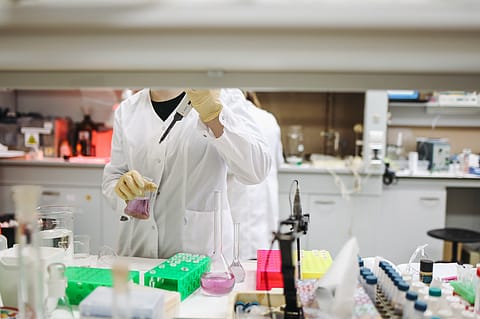Healing the World: India’s rise as global medical hub
The sector, which is valued at approximately ₹1 lakh crore in 2024, is projected to grow at a healthy CAGR of 17.2% to surpass ₹4.3 lakh crore by 2034.

Over the past two decades, India has emerged as a preferred destination for medical value travel (MVT). Kudos to its affordable world-class healthcare services, minimal waiting time, state-of-the-art infrastructure, skilled healthcare professionals, cutting-edge medical technology and infusing modern medicine with traditional healing practices like Ayurveda and Yoga. The country is gradually cementing its position as a global hub for medical tourism. The recent Union Budget’s focus on expanding the medical tourism under the ‘Heal in India programme’ with simplified visa norms will provide a renewed momentum to this initiative. The sector, which is valued at approximately ₹1 lakh crore in 2024, is projected to grow at a healthy CAGR of 17.2% to surpass ₹4.3 lakh crore by 2034.
Our health system is on par with other medical tourism countries such as Thailand, Singapore, Brazil and Turkey. India has been ranked 10th in Medical Tourism Index (MTI) for 2020-21 out of 46 destinations of the world by Medical Tourism Association. Many facilities are accredited by global standards such as the Joint Commission International (JCI), which enhances their credibility and attractiveness to international patients. The cost of medical procedures in India is significantly lower compared to Western countries. Patients can save up to 60-90 per cent on treatments, which makes the nation a cost-effective option without compromising on quality. This affordability extends across a wide range of medical services, including cosmetic surgeries, fertility treatment and more complex procedures such as Cardiology and Oncology.
In addition to the direct savings on medical procedures, medical tourists in India benefit from several cost advantages that make their overall treatment experience more affordable. Accommodation expenses are significantly lower, with a wide range of budget-friendly options available for patients and their companions. Many hospitals also provide in-house guest facilities at competitive rates. Additionally, the cost of medications is considerably reduced as India is one of the world's largest producers of generic drugs, making post-treatment care more economical. Another key advantage is the favourable exchange rate, which further lowers expenses for patients from countries like United States, United Kingdom, Bangladesh, Middle East, Africa, CIS countries, SAARC nations, Southeast Asia, and the Pacific Rim.
Why should we focus on Heal in India programme?
With around 7.3 million medical tourists visiting annually from diverse regions, giving a special impetus on the Heal in India programme is essential. It will not only bolster India’s position as a global leader in medical tourism but also enhance the healthcare ecosystem, streamline patient services and reinforce trust in Indian healthcare facilities.
Besides that, medical tourism is crucial in attracting FDI into India’s healthcare sector. FDI in the healthcare sector improves the quality of services, enhances technology adoption, and enables Indian hospitals to compete with global standards. As India becomes a preferred destination for medical value travel, the growing influx of international patients increases the demand for world-class hospitals, advanced medical equipment, and specialized healthcare services. This, in turn, encourages global healthcare providers, investors, and private equity firms to invest in India's hospitals, telemedicine platforms, wellness centers, and medical research facilities.
This further expansion of healthcare infrastructure—such as specialized hospitals, wellness centers, and telemedicine services—will also create job opportunities in construction, facility management, and medical technology. Furthermore, ancillary sectors like travel, hospitality, and pharmaceutical industries will also reap the benefit and set the stage for overall economic development.
Recommended Stories
What policy changes should the government make?
Though the MVT sector has immense potential, it faces several key challenges that hinder its growth and efficiency. One of the major weaknesses is the absence of a regulatory framework to govern the sector. This lack of regulation leaves MVT largely unorganized, making it difficult to monitor the quality of services provided by stakeholders. Without proper oversight, patients may face inconsistencies in service quality, impacting India’s reputation as a medical tourism destination. There is an urgent need for the government to step in with clear regulations, better facilitation, and structured marketing efforts to establish India as a trusted hub for medical value travel.
Another significant challenge is the fragmentation of efforts across various ministries and organisations involved in the promotion of MVT. The lack of a dedicated nodal body to spearhead and coordinate medical tourism efforts results in inefficiencies and missed opportunities. Poor coordination among key stakeholders—including airlines, hospitals, and hotels—further affects the seamless experience that international patients expect.
Additionally, India has not been effectively promoted as a global medical tourism destination. While individual hospitals invest in marketing their services, there is no large-scale, government-led campaign to establish India as a brand for medical value travel. A well-structured promotional strategy, coupled with regulatory support and stakeholder coordination, is crucial to unlocking the full potential of India’s MVT sector and positioning it as a premier destination for international patients.
(INR CR)
Om Manchanda is Managing Director, Dr Lal PathLabs and Treasurer, NATHEALTH. Views are personal.